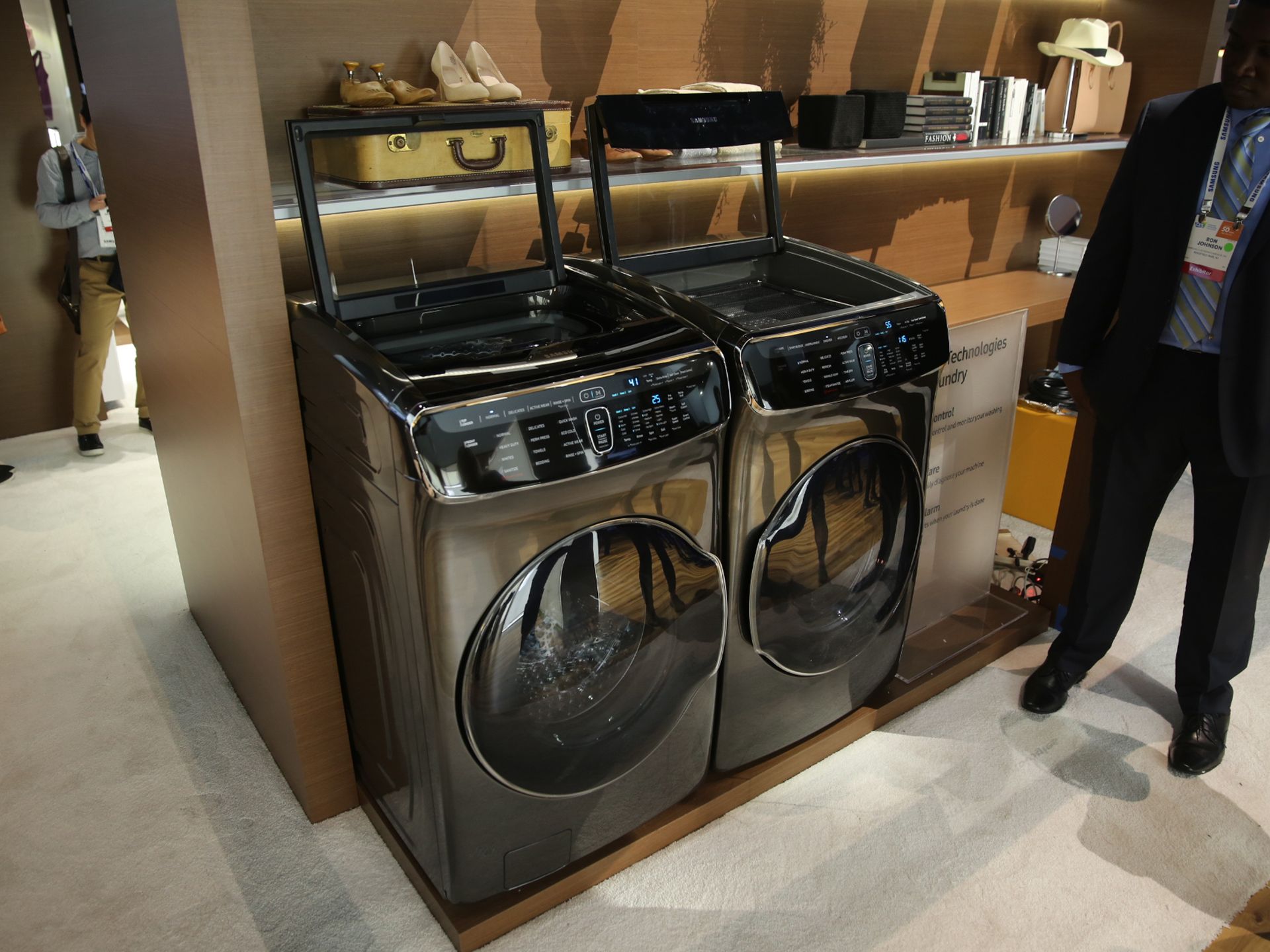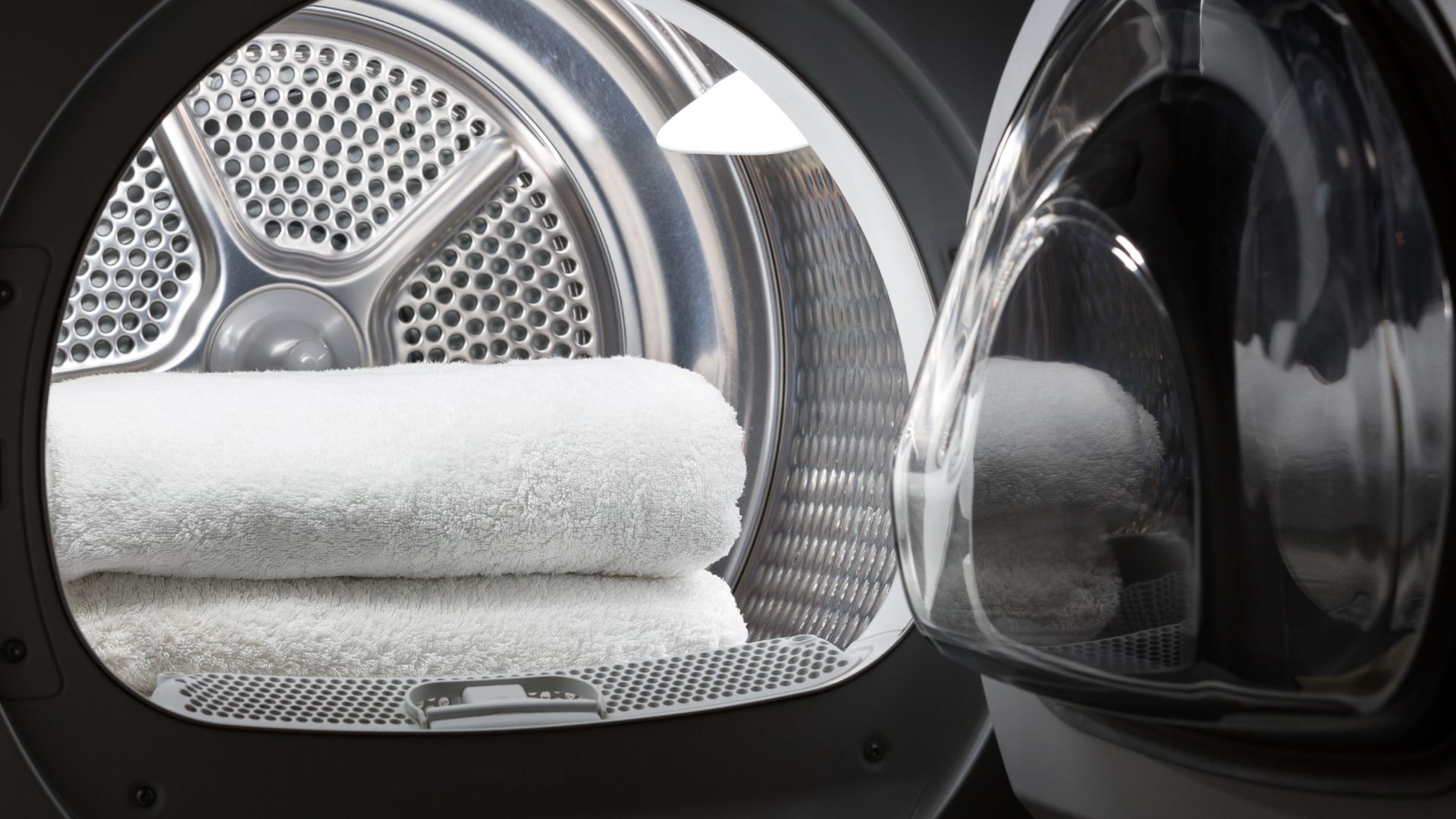Encountering a Samsung Dryer not heating issue can leave you puzzled, with controls showing signs of life but the start button refusing to cooperate.
How to fix Samsung Dryer not heating issue?
Electric dryer: Ensuring adequate power supply
In the case of an electric dryer, it is crucial to verify the power source.
- Check if the circuit breaker assigned to the dryer has tripped.
- Since electric dryers rely on a 240V power supply with a 2-pole breaker, it’s possible for one pole to trip while the other remains functional.
- Although the dryer will still spin due to the available 120V from the unaffected breaker, the heating element won’t activate. To rectify this, completely switch off the dryer circuit breaker and then switch it back on.
- Proceed to our page to check the outlet that supplies power to the dryer after ensuring the power is restored.

Samsung Dryer not heating: Check gas dryer
Gas dryer: Simple checks
For a gas dryer, a few straightforward checks can help resolve the issue:
- Ensure that your gas bill is paid, especially if the dryer is the sole gas appliance in your household.
- Confirm that the gas supply is properly connected and turned on.
- Verify that the gas valve or cock is open by ensuring the handle aligns with the pipe.
- If this problem arises during the initial setup, inspect the gas supply pipe for any blockages. Resolving this may involve disassembling the supply line to ensure clear passage.
Maintenance
At this stage, resolving the problem requires accessing the interior of your dryer.
- Take advantage of this opportunity to conduct a thorough cleaning, as a dirty dryer is susceptible to numerous malfunctions.
- Since you’ll need to open the cabinet, there’s no harm in performing a cleaning routine. Moreover, it provides a better environment for troubleshooting.
Ensuring proper airflow: Your dryer’s performance relies on adequate airflow. Insufficient airflow caused by clogged exhaust ducts can lead to overheating, resulting in a lack of heat. Our Dryer Maintenance page offers a step-by-step guide on cleaning your machine and exhaust ducts and checking the airflow, guaranteeing optimal functionality.
Faulty thermal cutoff or Hi-Limit thermostat
Considering your dryer still spins, it’s highly unlikely that the thermal fuse (found on the blower outlet in Samsung electric models) or the thermal cutoff (situated on the blower housing in gas models) has blown. Such occurrences would result in the motor stopping and refusing to restart.

- Begin by checking the thermal cutoff on your electric dryer.
- Locate it on the heater assembly, positioned towards the front of the dryer. Use a multimeter to check for continuity.
- If the thermal cutoff is functioning correctly, proceed to the next item on the list. If it’s faulty, replace it along with the hi-limit thermostat. Then move on to inspect the control devices.
- Examine the hi-limit thermostat, which can experience failures where it fails to open, triggering the operation of the thermal cutoff.
- On gas models, find the hi-limit thermostat on the burner cone.
- On electric models, it is situated on the heater box, next to the terminals for the heating element. The thermal cutoff is positioned right next to it.
- Use a multimeter to test the hi-limit thermostat for continuity. If it’s functioning properly and the thermal cutoff hasn’t blown, proceed to inspect the control devices. If the thermal cutoff was blown, replace the hi-limit thermostat as well, and then examine the control devices.
Faulty control devices
Most Samsung dryers utilize thermistors instead of thermostats for temperature control.
- To measure the resistance of these devices, refer to the tech sheet typically enclosed inside your dryer cabinet.
- Use a multimeter to check the resistances of the thermistors. If any of the readings deviate by more than 5% for the respective temperature, replace the faulty thermistor.
- Keep in mind that a higher resistance reading from a thermistor for a given temperature will prompt the machine to generate more heat, potentially leading to overheating.
- This can trigger the operation of the thermal cutoff due to excessive heat.
- It’s common to find two thermistors in a dryer. Consult the tech sheet for specific instructions and ensure that you check the resistances of both, as they may differ significantly.
Heating element failure (electric models only)
In electric dryers, the heating element can wear out over time, resulting in a lack of heat production.
- To check the heating element, use a multimeter to measure its resistance.
- A reading between 10 and 30 ohms across the contacts indicates normal functionality.
- If the resistance is higher or there is no continuity at all, it is necessary to replace the heating element.
- Often, one element has a higher wattage rating than the other.
- If one heating element burns out while the other remains functional, you may experience slower drying times but not necessarily a complete lack of drying, especially if the lower-power element is still operational.

Faulty ignition system or gas burner (gas models only)
Gas dryers from Samsung can encounter issues related to igniting the gas flame. Since this involves a series of complex events, we will provide a brief overview here, but for detailed information and testing instructions, please refer to our comprehensive guide on Ignition System Failure. Note that caution should be exercised when running the dryer with cabinet parts removed for inspection.
- Your gas dryer utilizes an igniter to ignite the gas.
- The gas valves will not open unless the igniter reaches a sufficient temperature.
- The flame or radiant sensor is responsible for detecting the igniter’s heat and allowing the gas valves to open, thus maintaining the flame.
- The gas valves may fail to open due to malfunctioning solenoid coils, which control their operation. In newer Samsung dryers, the coils are part of a replacement gas valve assembly and cannot be obtained separately.
- The gas valve itself might have failed.
- It is also possible that there is an issue with the gas supply pipe, such as a piece of pipe tape obstructing the flow (although this is rare if the dryer was previously working).
Also, you can check our other article: Does Apple Music have Ads? Everything you need to know
Other causes
Several other factors can contribute to a Samsung dryer not heating properly:
- The moisture sensor wiring may be faulty, causing the dryer to indicate an open circuit (assuming there are no wet clothes) and preventing heat generation during automatic cycles. However, it should still produce heat during timed dry cycles. The resistance should measure approximately 190 ohms with wet clothes.
- In electronic models, a malfunctioning main control board could be the culprit. Diagnostic procedures are usually available to check the control board, especially if a tech sheet is enclosed within the dryer’s cabinet.
- A failed centrifugal switch on the motor can simulate a lack of airflow (since the motor doesn’t turn, resulting in no airflow) and prevent the heat source from operating.
- If present, the timer may be faulty. If all other tests indicate no issues, it is advisable to check the timer contacts as a precautionary measure.
By considering these various factors, you can effectively troubleshoot and address the root cause of the Samsung dryer not heating problem.

